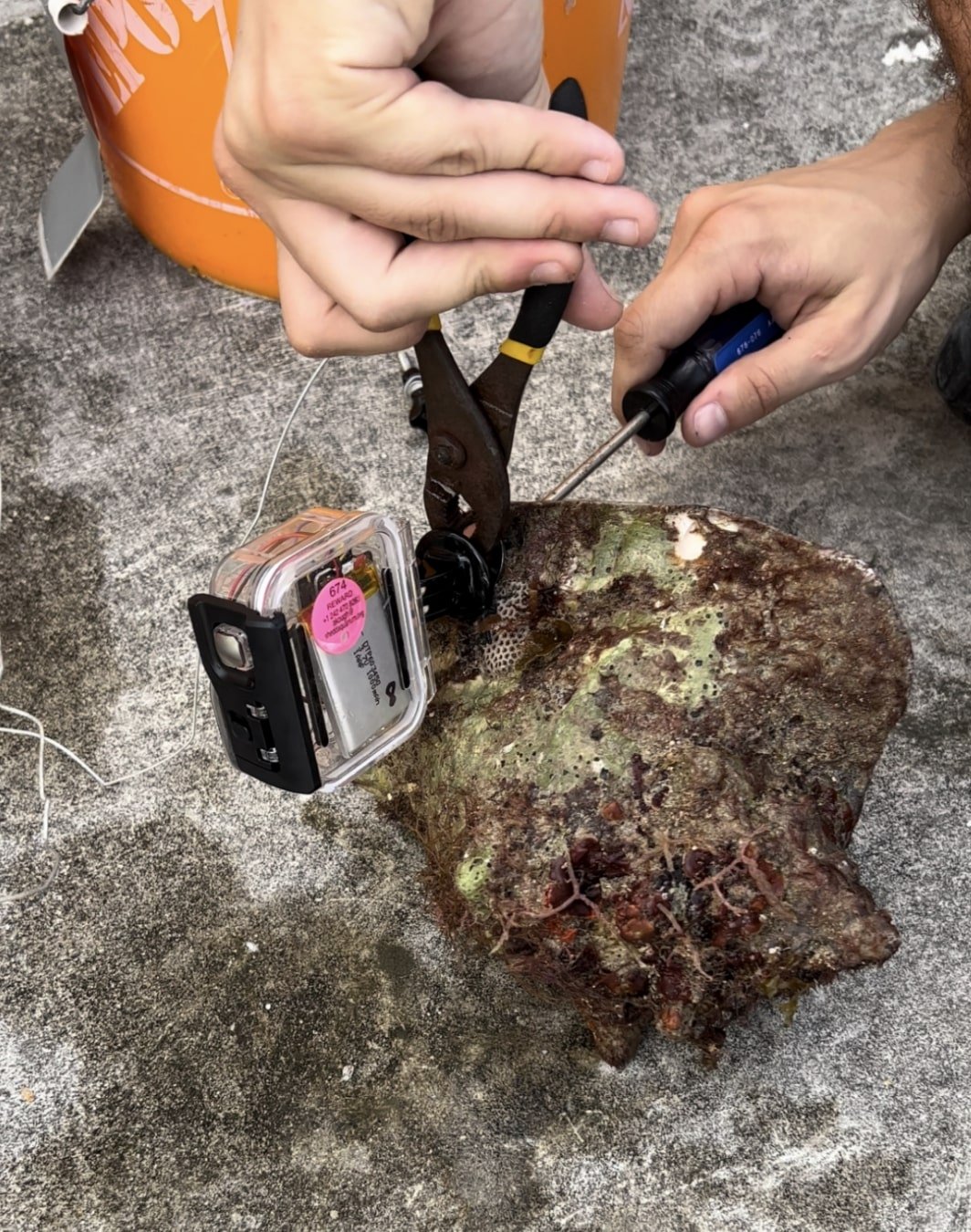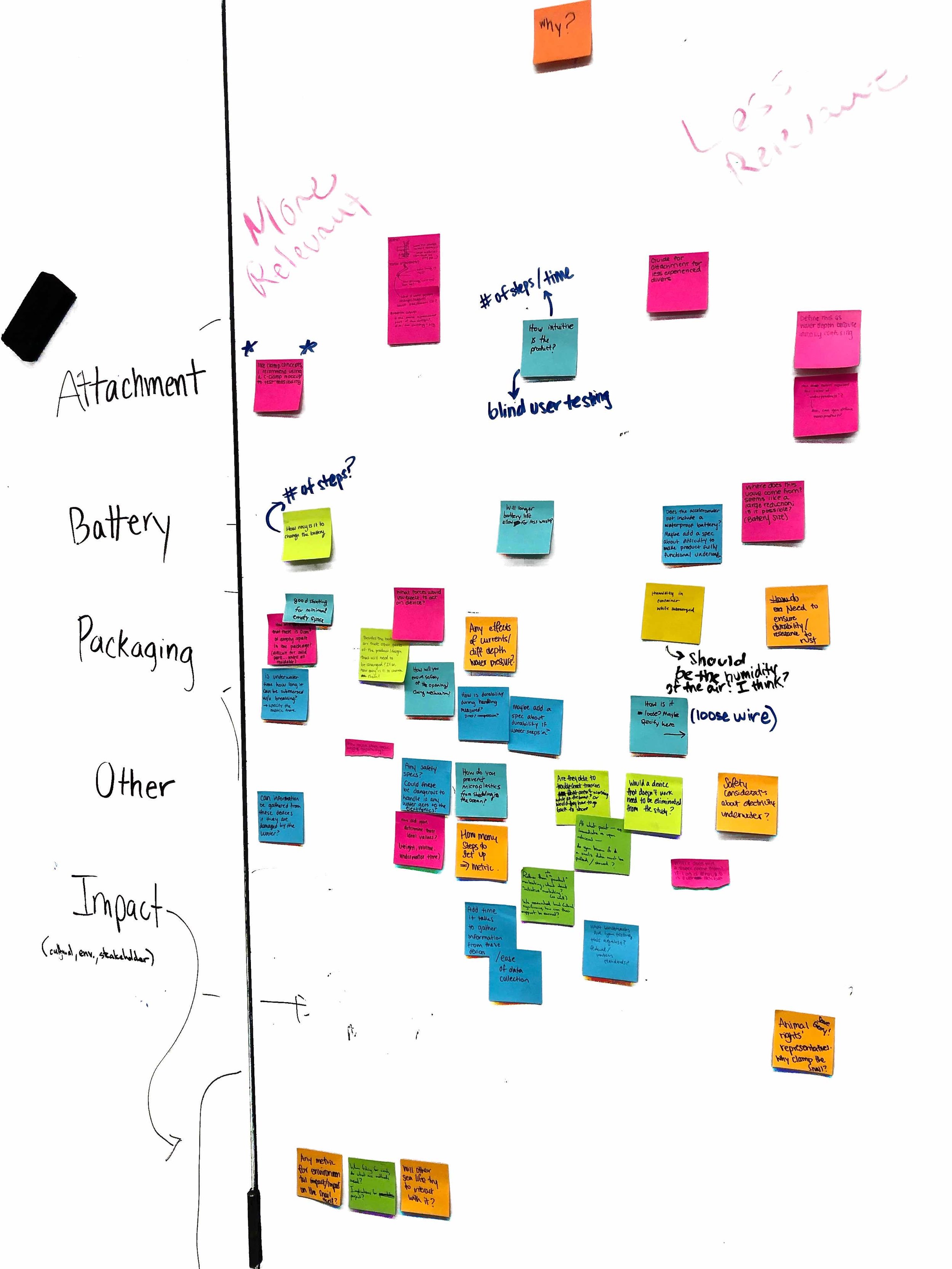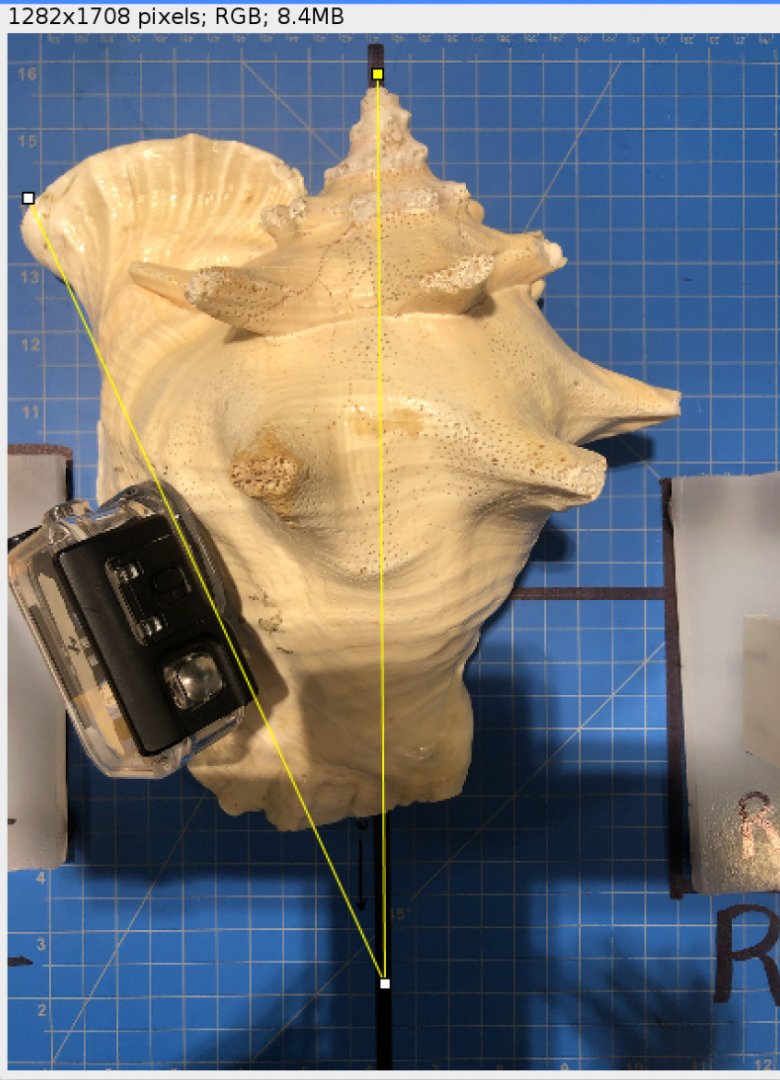
Snail Tracker Project
Development of a queen conch tracking device, from research to on-site application.
Client: Shedd Aquarium researcher
September 2021- March 2022
Phase 1 Defining and Validating the Problem
Background
Our client tracked conchs by attaching tracking devices to their shells that capture accelerometer data on the conchs’ movements. Conchs move by hopping along the seafloor.
Existing conch tracking configuration.
Challenges
The Queen Conch is a species integral to the marine ecosystems of the Caribbean, yet its population has been in decline, largely due to overfishing and habitat loss. The ability to accurately track the movements of these sea snails is crucial for the strategic establishment of Marine Protected Areas (MPAs) and conservation efforts. We encountered several significant hurdles in the existing design.
-
Traditional methods of tracking, primarily utilizing accelerometer data, struggled to accurately capture the conch's movements. The discrepancy between the orientation of the tracking device and the actual heading of the conch often resulted in data that was difficult to interpret, undermining the reliability of the movement patterns being mapped.
-
The variability in the shapes and sizes of conch shells presented a unique challenge in attaching the tracking devices in a consistent, secure, and non-invasive manner. More invasive methods risked harming the animal and affecting their natural behavior, which could skew the research data.
-
The limited battery life of existing tracking devices necessitated frequent human intervention to replace batteries, introducing logistical challenges and the risk of disturbing the natural behavior of the conches. This not only increased the operational complexity of the project but also introduced potential biases in the data collected.
-
The ecological footprint of the tracking methodology, including the potential toxicity of attachment materials and the overall environmental impact, required careful consideration. Ensuring that the research methods were sustainable, non-invasive, and ethically sound was key, necessitating a delicate balance between technological efficacy and ecological sensitivity.
-
For the tracking solution to be truly impactful, it needed to be scalable and reproducible, allowing for an expanded conservation effort. This required the design to be both effective in its function and resource-efficient, presenting a challenge in finding materials that were readily available, cost-effective, and environmentally friendly.
Discovery and User Insights
This phase was crucial for understanding the nuanced challenges faced by marine biologists, conservationists, and the ecosystems dependent on the Queen Conch. By engaging directly with stakeholders and conducting thorough research, we uncovered several critical insights that shaped the direction of our project.
Methods
Literature review, expert interviews
Areas of Discovery
Marine biologists’ perspective
Conservationists’ concerns
Technological limitations
Ethical review
Interdisciplinary collaboration insights
Phase 2 Conceptualization and Strategy
Defining the Scope
The project's scope was refined based on the insights gathered from marine biologists, conservationists, and the review of existing tracking technologies. We aimed to create a tracking solution that was non-invasive, environmentally friendly, highly accurate, and easy to use in the field. Key considerations included minimizing physical and behavioral impact on the conches, ensuring the durability and reliability of the tracking device in marine environments, and enabling more efficient data collection and analysis.
Design specs chart
Feedback & Synthesis
Collecting feedback from design reviewers
Category mapping for action plan development
Design reviews informed our direction as we continued ideation and testing on attachment methods (e.g. epoxies, bio-inspired suction cups, drilling), battery, packaging, and materials choices.
Phase 3 Design proposal
Improved Attachment Method
The mechanical fastener method is an easy, quick attachment method that involves drilling a ¼” hole at a high torque setting into the lip of the shell and screwing a bolt into the GoPro mount.
Configuration of components with mechanical fastener on conch (with rubber washer, bolt, split washer & nut).
Arduino Positioning Cradle
The accelerometer must be aligned with the case edges so the angle measurement method can be accurate to the true accelerometer direction. If the accelerometer is tilted within the case, the directionality measurements of the data will be incorrect because the angle is measured with respect to the edge of the case, not the edge of the accelerometer. It is essential that there is consistent alignment of the accelerometer across all tracking devices. Ensuring a consistent position of the accelerometer within the case allows for accurate measure of angular offset between the snail heading and the accelerometer heading.
The cradle keeps the accelerometer aligned with the case edges to prevent internal movement & improve accuracy of directionality measurements.
Angle Measurement Procedure
The Angle Measurement Procedure allows the researchers to reliably measure the angular offset between the conch heading and the x-axis of the accelerometer, and assists in converting acceleration data into directionality. It consists of an angle measurement tool that helps users capture a consistent image of the offset between each device and the conch it is attached to, ImageJ (a free software tool that can be used to measure angles in images), and optionally the use of Google Sheets or a similar spreadsheet software tool to assist with recording the angular offsets of each device for a given experiment.
Angle measurement tool
Angular offset between the device orientation and the conch heading is measured using ImageJ software. This data is recorded and used in the lab to correct accelerometer data.
On-site testing Miami Field Work
Overview
To better understand the design implementation procedure and environment of application, I joined researchers for the on-site retrieval of 16 conchs at Everglade Port in Fort Lauderdale, FL, along with assembly and testing at Florida International University (FIU) Biscayne Campus and subsequent release of the conch.
-
In-depth behavioral observations of the Queen Conch were conducted prior to, during, and for an extensive period of 22 hours after the drilling procedure for device attachment. Initial concerns about potential stress-induced abnormalities in conch behavior post-drilling were carefully monitored and assessed. The comprehensive observational data collected revealed that the majority of conches resumed typical movement patterns within half an hour of being reintroduced to their saltwater environment, thereby alleviating the team's initial apprehensions regarding post-procedural stress response. This finding substantiated the conch’s resilience to the drilling process and provided valuable insights for the refinement of our tracking device deployment strategy.
-
We carefully selected eight conchs for the study based on their suitability for the tracking device attachment — specifically, the lip size was a determining factor for drilling. The process involved several methodical steps to confirm both the functionality of the tracking devices and the accuracy of the data collected, rooted in the precise initial alignment of the conch. Post-attachment, conchs were positioned with the aid of a PVC alignment pipe next to a compass oriented northward. To facilitate subsequent data analysis, we deployed a quadrant system within the mesocosm. Strategic placement of strings above the mesocosm assisted in logging the conchs’ exact locations and orientations. Data points, such as the unique logger number, shell length, lip thickness, and placement spot, were meticulously recorded, ensuring the robustness and reliability of our tracking methodology."
Conchs are placed in a saltwater mesocosm. Distance moved is measured to ensure proper acclimation, and the conchs await the testing of the data loggers while interim trackers are prepped.
Data loggers are soldered and placed in Go-Pro housing.
Attachment: After the lip of each conch is drilled, trackers are attached for data logger testing.
Novel alignment method. Once each conch is taken from the tank and fitted with a tracker, they are aligned with a PVC pipe beside a north-facing compass. Strungs are hung from above the mesocosm in order to record location and directionality, with the tank sectioned into four quadrants.














